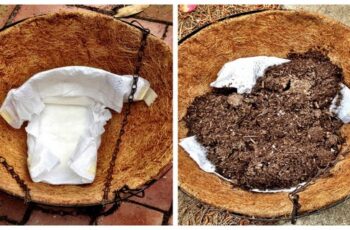Ad Blocker Detected
Our website is made possible by displaying online advertisements to our visitors. Please consider supporting us by disabling your ad blocker.
Winter care for outdoor chickens demands thorough preparation against the cold, safeguarding from predators, ensuring warmth and dryness for the hens, and maintaining coop conditions. Adopting five tips ensures your flock remains intact from September to April.
Beyond the concerns of frostbite and snow, winter chicken keepers face perennial issues like predator threats. While some predators hibernate or migrate, others intensify their efforts to target hens and eggs as alternate food diminishes.
Managing backyard chickens in winter introduces a new level of responsibility for a secure and sheltered environment. Besides fortifying coops, providing a suitable diet becomes crucial to sustaining warmth and health.
Various regions pose diverse challenges to flocks during winter, ranging from freezing temperatures and harsh winds to heavy snow and ice. This season severely limits their ability to forage and move about, making it more demanding to ensure their well-being.
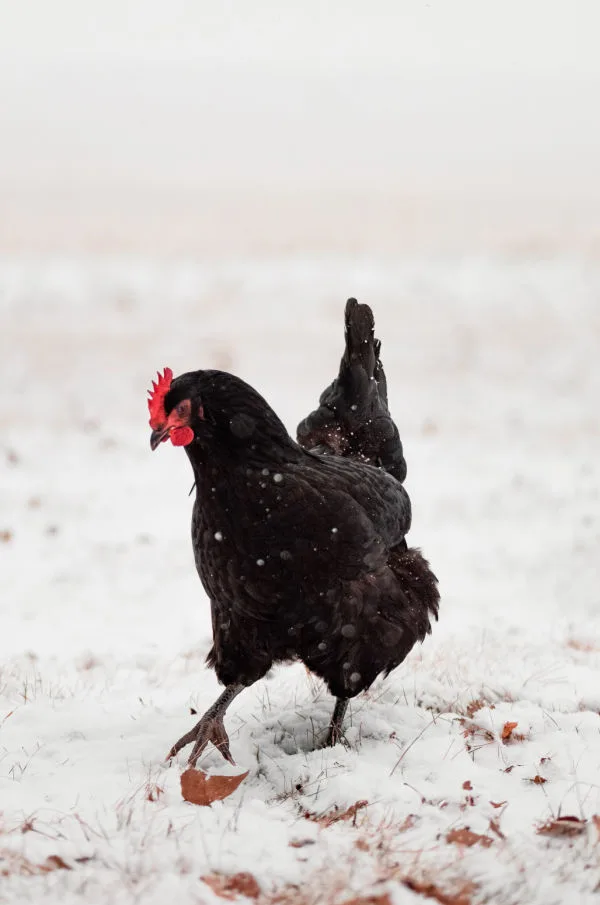
Chickens are surprisingly resilient creatures, often unfazed by the cold. Contrary to popular belief, their thick plumage typically suffices to keep them warm in most conditions.
However, the key to maintaining a chicken’s well-being revolves around allowing them to dry their feathers and providing a shelter free from drafts. When a chicken’s feathers become soaked, their insulating capacity diminishes significantly.
Similarly, a damp and drafty coop poses risks to their health, preventing their feathers from drying properly. This situation can swiftly endanger their well-being. To ensure your chickens thrive throughout winter, it’s essential to maintain both their health and the condition of their coop.
How To Keep Chickens Safe In The Winter
Give Your Chickens The Right Kind Of Diet
In winter, chickens undergo a significant rise in calorie expenditure compared to summer, all aimed at maintaining their body warmth. Similar to other outdoor winter animals, their metabolism spikes to generate extra energy for heat, resulting in faster calorie burning.
Ensuring a constant food supply for chickens is crucial, especially during early mornings and evenings. The late calories aid in keeping them warm during chilly nights while roosting, while early morning feeding helps replenish what they’ve lost overnight.
Moreover, beyond maintaining a steady food source, adjusting their feed during winter becomes imperative.
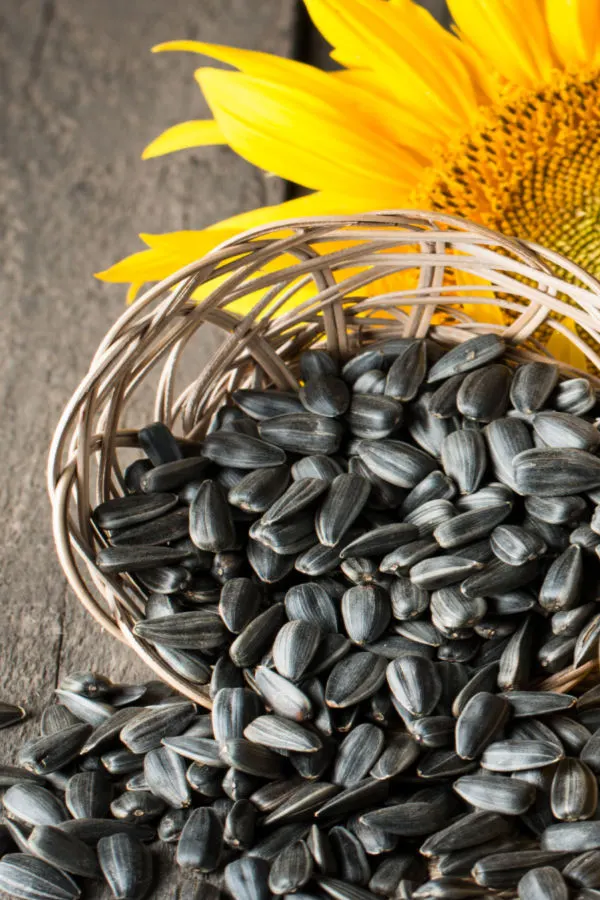
- Affiliate Product Link: Black Oil Sunflower Seeds
- Affiliate Product Link: Cracked Corn Feed
The Importance Of Fresh Water
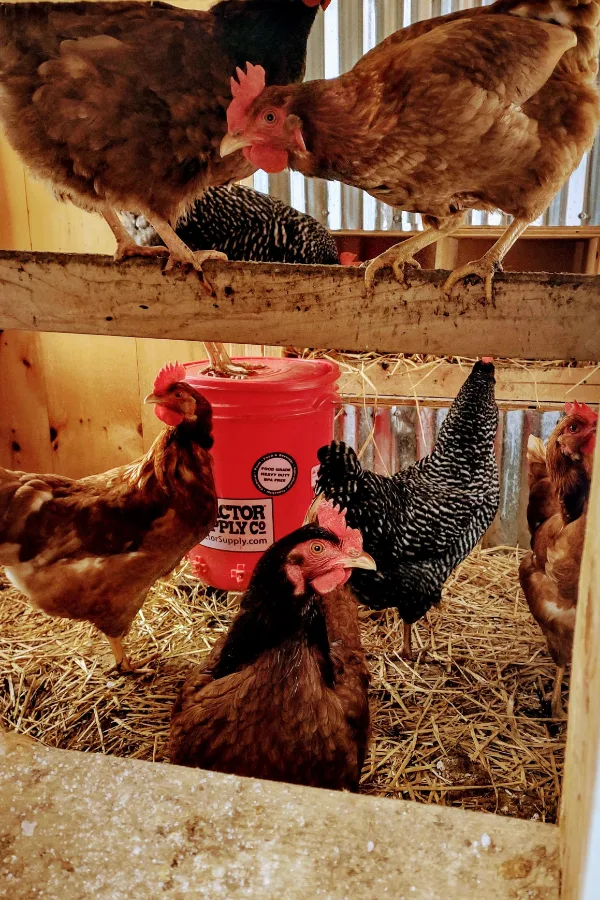
After years of trudging in and out of the cold, we finally went with a heated poultry watering pail. There are many types on the market – some use a warming base to put your water pail on top, while others heat the water in a single water unit to keep it from freezing.
Winterizing Your Chicken Coop
Winterizing A Chicken Coop’s Door
We keep our chicken doors closed completely from dusk to dawn, and open during the day. An automatic solar door makes that task easy and efficient. But in the winter, we also install rubber flaps inside over the door to keep out the air and keep the coop warmer when the main door is open during the day.
Crafting flaps using cut-up rubber floor mats and affixing them inside above the coop door serves as a simple yet effective insulation method. These flaps aid in retaining warmth within the coop during daylight hours, and chickens typically adapt swiftly to using them.
While it’s essential to cover windows and doors for winterization, maintaining adequate ventilation is equally crucial. Providing a controlled airflow is vital to prevent respiratory illnesses in poultry and ensure their overall health. Balancing insulation with sufficient ventilation helps maintain a healthy environment within the coop during the winter months.
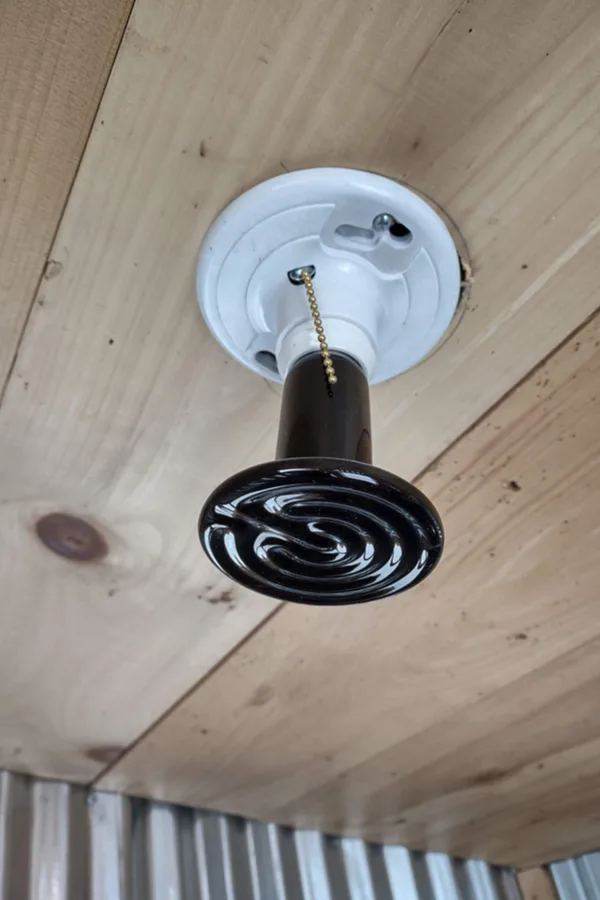
Warming The Coop
Maintaining some warmth within the coop is beneficial, especially to prevent water and eggs from freezing and to ensure the chickens’ comfort. However, instead of relying on artificial heating methods, natural sources of heat can be harnessed effectively.
The deep litter method is a fantastic way to both warm and winterize a chicken coop. Rather than completely clearing out the straw and manure during winter, regularly adding fresh straw keeps the bedding replenished. As the manure breaks down beneath the straw, it generates heat, contributing to warming the coop. This technique, tried and tested by many chicken farmers over the years, proves to be a successful and natural way to maintain warmth during colder seasons.
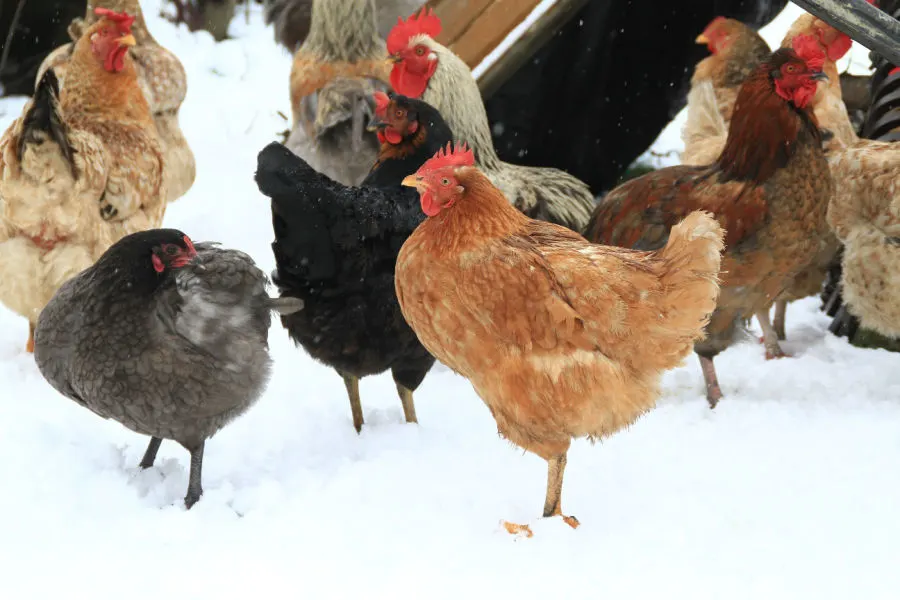
Absolutely, in extremely cold climates, adding a supplemental heat source alongside the deep litter method can indeed be advantageous for the chickens’ well-being. If electricity is accessible near the coop, installing a safe heating system can effectively complement the natural warmth generated by the deep litter method.
Several safe heating models designed explicitly for chickens are available in the market today. It’s crucial to avoid using unprotected heat lamps as they can pose severe injury risks and potential fire hazards for your chickens and the coop. Opting for safe and designed-for-purpose heating solutions ensures both the safety of your flock and minimizes fire risks.
Seal the cracks.
Preparing for winter involves more than just weatherproofing; it’s also a critical time to inspect for any vulnerabilities in the coop structure. Sealing cracks, gaps, and uneven seams not only keeps out the cold and dampness but serves a crucial role in preventing ground predators from accessing the coop. As temperatures drop, the risk of snakes or cats seeking warmth and shelter inside the coop increases significantly.
By proactively identifying and sealing entry points before the cold weather sets in, you can reduce the chances of unwanted intrusions. However, it’s essential to maintain a balance to prevent ammonia buildup. Opening the top vent or higher windows slightly enables a controlled exchange of air, allowing fresh air to enter and stale air to exit, ensuring a healthy environment for your chickens while keeping predators at bay.
Elevate your coop.
Considering these factors during the initial construction of the coop is ideal. However, even if the coop is already in place, renovations can still address these concerns effectively. Elevating the coop, even by just a foot or so off the ground, proves beneficial in preventing smaller animals like rats from nesting underneath and potentially preying on chicken eggs. Higher elevations that provide space for hens to move underneath the coop can also optimize space usage.
Elevated coops offer various advantages, especially during the coldest and wettest seasons. They safeguard against flooding and water damage and help regulate temperatures more effectively since the coop’s floor isn’t in direct contact with the likely frozen ground. These renovations, albeit after the coop’s construction, can significantly enhance the coop’s functionality and protection for the chickens.
Install an automatic door on your chicken coop.
Automatic chicken coop doors are a blessing for busy chicken keepers or those who prefer a bit more sleep. However, they serve a dual purpose as a crucial defense against predators. By scheduling these doors to open and close at specific times, they not only ease your workload but also ensure that your hens are safely inside by a set hour, ideally at or before dusk – a prime time when predators like foxes and owls are most active.
These doors commonly operate on either a timer or a light sensor, the latter being especially useful during the changing daylight hours in fall and spring. However, it’s essential to consider that extreme or icy winter conditions can pose challenges for the necessary motors and electronics. To address this, owners should research and select a door model that can withstand their specific winter weather conditions, taking into account reviews and product specifications.


